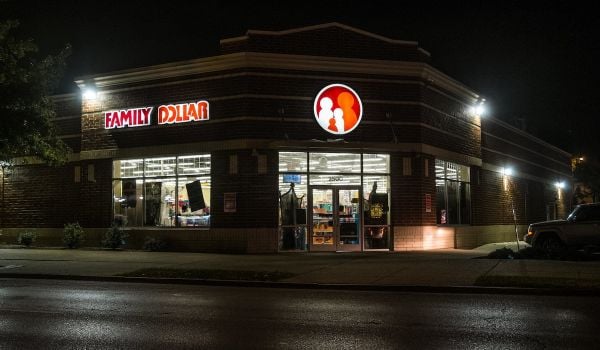Cars jammed the parking lots, spilled over onto the lawn and relentlessly circled, searching for spaces. One recent Saturday at the state-run Charlotte Regional Farmers Market, Arlene Haigler could plainly see how a national trend had come home to North Carolina.
“We had 4,100 cars,” Haigler, the market’s acting manager, said of that late-May Saturday. “They parked in front of our office and everywhere.”
Fed by a growing interest in local food, residents in the Charlotte region and nationwide are flocking to farmers markets. Communities are responding by opening new markets or expanding hours, and vendors are responding by elbowing for sales space.
The number of farmers markets nationwide jumped 17 percent last year, with more than 1,000 new markets opening, bringing the total to more than 7,100, the biggest increase since the U.S. Department of Agriculture began tracking the category. North Carolina, with more than 200 farmers markets in 2011, ranked in the top 10 states for markets, the only Southern state to make that list.
Some area markets have responded to the surge in interest by expanding hours or adding days. The growers-only Matthews Community Market added a new “Twilight Market” on Tuesday evenings, with chef demonstrations and live music.
And in the last few years, at least half a dozen new markets have popped up in the Charlotte area alone, said Kristin Davis, the Mecklenburg County Cooperative Extension agent specializing in local foods. They range from the chef-created Elizabeth Avenue Farmers Market, to the boutique indoor Atherton Mill and Market, to the tiny market next to a gas station at Shamrock Drive and Eastway Drive in east Charlotte.
One recent Saturday, Martha Rhyne stood under an umbrella at the Shamrock site, her S&J Produce table one of two vendors at that fledgling market. A few customers pulled off the busy street or walked over from the gas station to look over the cantaloupe or sweet corn, which S&J, a reseller, buys from other growers, not necessarily local ones.
Rhyne, who sometimes runs this stand or another S&J one at the Shuffletown Farmers Market on Rozzelles Ferry Road, said business is picking up at the somewhat gritty location. “We have some regular customers, and new people find us every day,” she said. “It’s going fairly well right now, and it’s going to pick up as time goes by.”
If regional trends hold true, Rhyne’s table may soon be joined by others.
“We are having calls and calls and calls” from would-be vendors, said Haigler of the Charlotte Regional Farmers Market, where N.C. farmers pay $15 a day for a table and S.C. farmers $25. “We’re at our limit. We have no more room for any more buildings.”
The Charlotte market recently decided to limit any more vendors from South Carolina because so many N.C. farmers wanted in.
Haigler — like predecessor manager Frank Suddreth — gets complaints about the large resellers at the market, vendors who sell produce grown by others and often from states as distant as Florida. But Haigler said they help pay the bills for the weekdays when the local farmers, who typically sell on weekends only, aren’t there.
“If it weren’t for the [resellers] we wouldn’t be able to pay our power bill,” Haigler said. “We have a storm water charge every month right around $1,000 or $1,100, and that’s not including our regular water bill.” Still, with space at a premium and N.C. growers a priority, the market won’t be admitting any additional resellers in the future, she added.

At the Charlotte Regional Farmers Market. Credit: Amber Veverka
Meanwhile, Haigler is trying to find ways to squeeze in a few more N.C. farmers — possibly by using traffic cones to mark parking lot space and allowing some to sell from the back of trucks. “I do wish we could expand and that we had more room,” she said.
It’s the same story at Piedmont Farmers Market’s outdoor Kannapolis market.
“They call, they email and they walk up to me at the market. They all want to know ‘How do I get in?’ ” said Lisa Wacheldorf, market manager.
The answer right now is: They don’t. The market, on Winecoff School Road, is full. Piedmont Farmers Market recently won a grant from The Cannon Foundation and N.C. Tobacco Trust Fund to expand, and Wacheldorf expects to have another pole shed ready for business — and new vendors — next year.
Piedmont Farmers Market also operates markets in downtown Concord, in Harrisburg and an indoor market at the N.C. Research Campus in Kannapolis. The busiest is the Winecoff School Road site, Cabarrus County’s oldest market. But only in recent memory has it become a jam-packed event, Wacheldorf said.
“The growth at Winecoff has really been astounding,” she said. “The start of the season is the Spring Herb and Plant Festival [in April], run by Cabarrus County master gardeners. That brings in thousands of people.”
When Wacheldorf herself was selling at the market, some five years ago, most of the vendors and customers were older residents, people who liked to make their own pickles or freeze large quantities of produce.
“Now you see a lot of children running around and younger people — it’s been a real interesting shift,” she said. “I think a lot of that shift has to do with the fact that we now have hormone-free and antibiotic-free chicken, beef, pork and free-range eggs.”
That’s good news to people such as Amy Jo Foster, who with Gil Foster runs Gilcrest Natural Farm in Iron Station, in Lincoln County. The Fosters sell their pasture-raised beef, chicken and eggs at the Davidson, Cramerton and Charlotte Regional markets.
“The niche meat producers have really gained in popularity,” Foster said. “Knowing your farmers is really more appreciated.”
Markets have to balance the tension between making room for new vendors and limiting sellers so there’s enough business for those already there, Foster said. And though markets such as the Charlotte Regional site struggle to increase weekday traffic, Saturday will remain the key day, especially for small producers. Midweek markets are hard, Foster said, “because I also need time to farm.”
Mecklenburg Extension agent Kristin Davis expects the public’s appetite for locally grown food only to increase, but she also sees the current rage for farmers markets to evolve.
“I think as demand increases, it will translate into more major markets, such as grocery stores. They’ll carry more fresh, local food,” she said.
Wacheldorf said she already sees the farmers market taking on the role of a farm business incubator, helping people get a foothold until they can break onto the bigger retail scene. “We’ve had some wonderful success stories of vendors that started out promoting their businesses at the farmers market — and now their businesses are so busy they can’t do the market anymore.”












